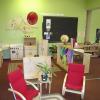- Provide and make available to staff a well-equipped professional resource library.
- Ensure that monthly training is completed, and work with child-development professionals to ensure that modules are completed.
- Model effective practices in designing a learning environment for children and adults.
Learn
Teach
Building a Professional Library
An important part of your role as a trainer or coach is ensuring that staff members have access to the resources they need to do their jobs well. Staff will often need professional development resources. These resources can take many forms: books, magazines, videos, curriculum tools, educational materials, website guides.
The Apply section of this lesson offers six tips for building a professional resource library. Here are some suggestions:
- Request a subscription to the journals published by professional organizations.
- Look for useful books. Throughout the Virtual Lab School, you will find suggested readings. These books may be helpful additions to your resource library. You can also browse publishers' tables at professional conferences for the latest titles.
- Help staff find appropriate websites. Again, professional organizations are a good place to start. Many have links to important resources.
- It can be very helpful to construct a lending library of child and youth literature, toys, games, and other materials. These types of materials can help staff turn an idea into reality. Staff can find the resources they need right away. This also helps avoid duplication of resources across a program.
- Many curricula come with professional development resources. These may be videos, guides, or supplements. Keep any of these materials that staff are not using in a centralized location, so they can be found when needed.
- There are many ways to include cutting-edge video in your professional library. The Virtual Lab School is a free source of such video.
It can be helpful to see examples of programs’ professional resource libraries. Look at these photos of well-stocked professional libraries and quality work spaces for staff members. Are there ideas you can use in your own program?
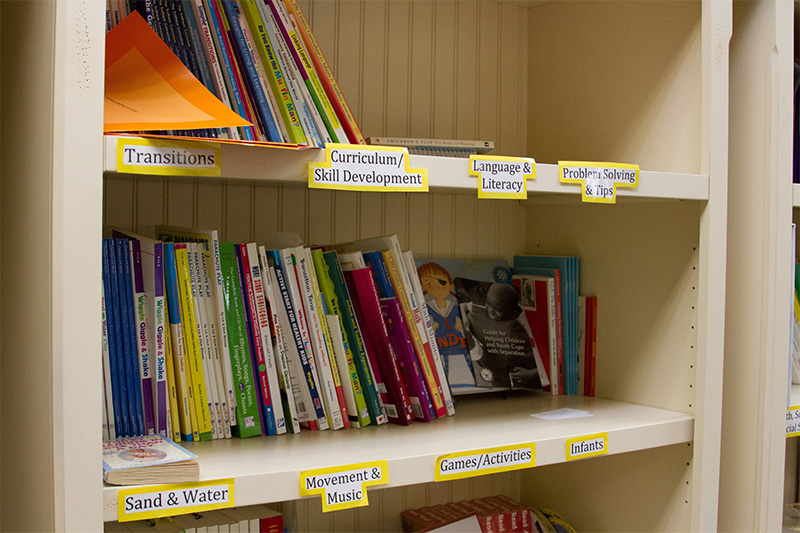
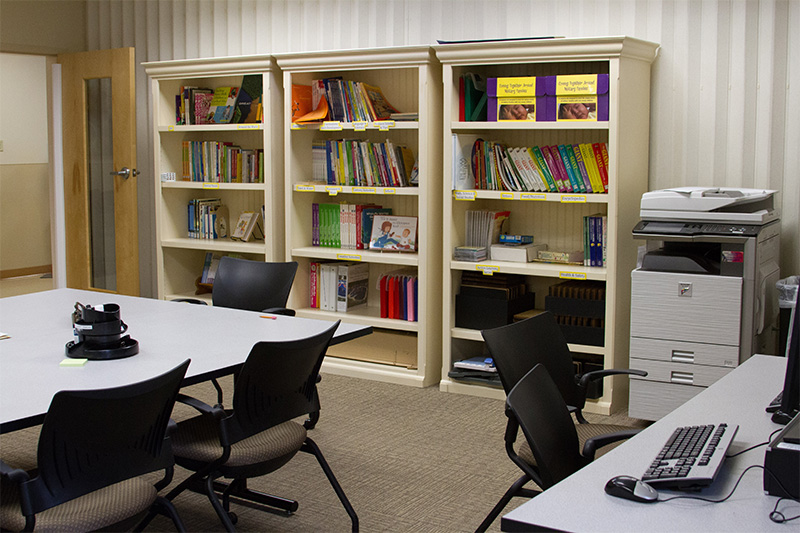
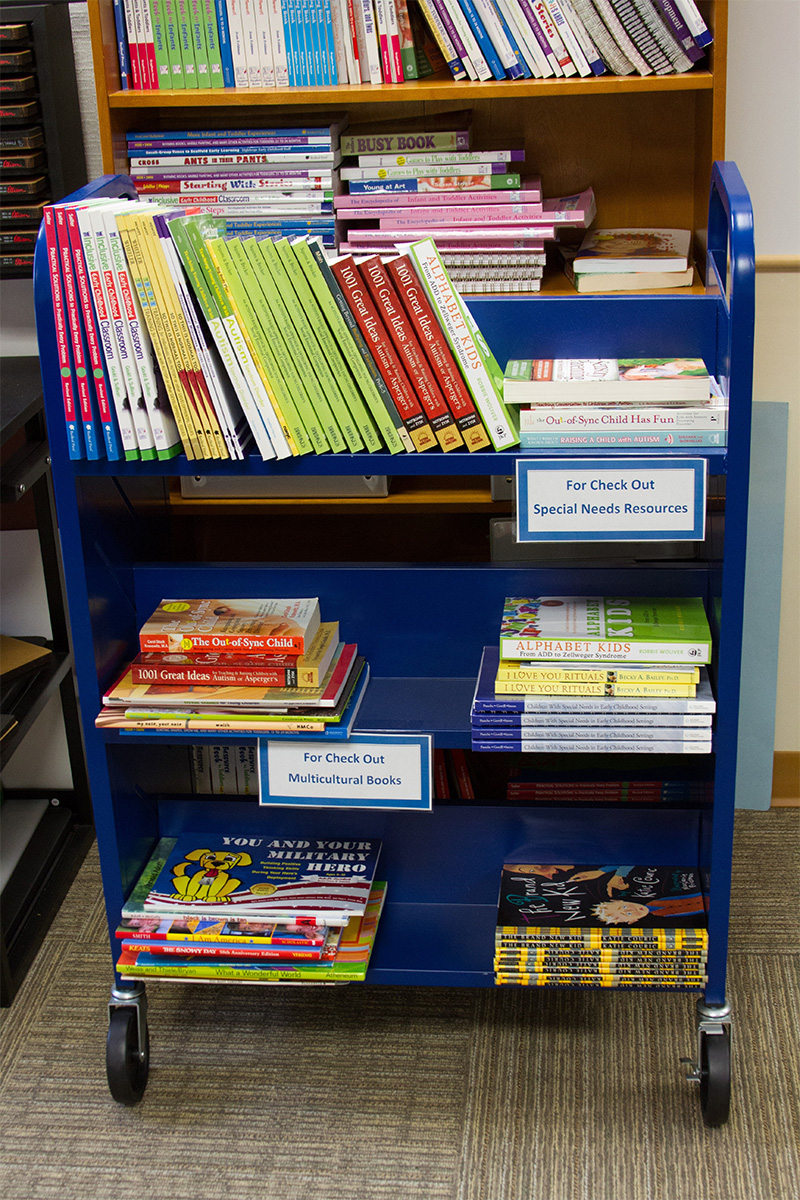
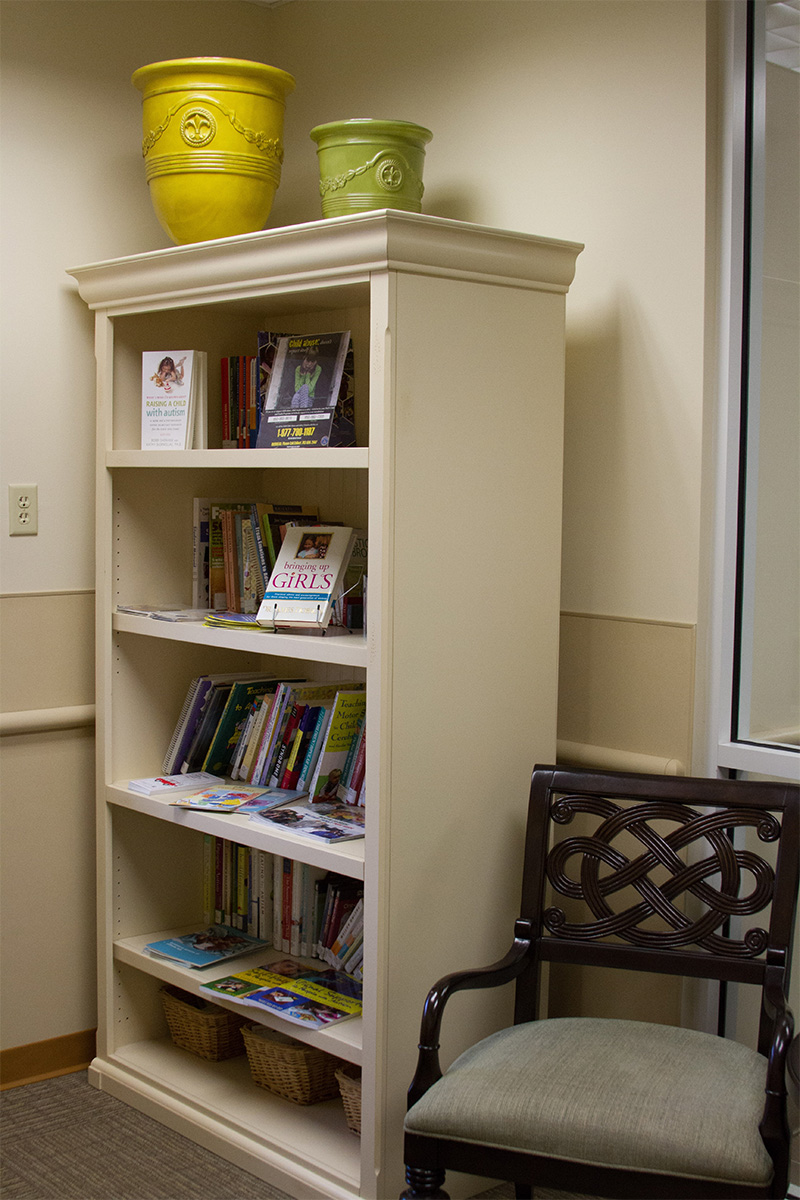
Building Learning Communities
As a trainer or coach in a center-based child and youth development program, you have the opportunity to encourage authentic, self-initiated professional development experiences for staff. One such experience is known as a professional learning community. Hord (1997) notes that, “three words explain the concept [of a professional learning community]: Professionals coming together in a group—a community—to learn.” In a childcare or educational setting, professional learning communities are groups of educators and administrators who meeting regularly to share expertise and work collaboratively with the goal of improving their teaching and best supporting children’s development and learning. There are five characteristics of an effective professional learning community, according to Shirley Hord (1997):
- Supportive and shared leadership: This means that you and your manager must see yourselves as learners along with the staff. There is a sense that everyone in the program supports professional learning and is invested in program excellence.
- Collective creativity: This means you and staff continually work together to spark new ideas, reflect, converse, and inquire. You focus on solving problems by applying new ideas.
- Shared values and vision: This means you and staff have agreed on why professional development is an important part of your program. You have a shared focus on child learning and development.
- Supportive conditions: This means you and staff have time and space to talk. It also means you have the kind of relationship with staff that encourages communication.
- Shared personal practice: This means staff members are expected to help one another by observing and discussing their work.
When these elements are in place, groups of child-development professionals can engage with one another to improve their professional practice. As a trainer or coach, you can facilitate this process and ensure that the structures are in place to continue its success.
Model
One of the most powerful strategies as a trainer or coach is modeling. As a trainer or coach, you ideally have a combination of expertise and experience in child development. You are a resource for the staff. As staff members are building new skills or trying new strategies, they may not feel comfortable using the skill right away. They may not completely understand what it looks or sounds like. They may need some guidance to feel comfortable trying out new skills. You can provide this guidance and provide a model for what the skill should look and sound like. Here are some guidelines for modeling with staff:
Also, remember that you, along with your program manager, can model the creation and maintenance of strong environments by incorporating some of the essential elements you want staff to enact in their classrooms into the other spaces staff use (e.g., your office, staff training rooms, staff break rooms, hallways). For example, consider:
- How materials for staff are organized. Are they arranged in such a way that you and the staff can easily access them? Are they arranged in such a way that they evoke learning? Perhaps in the staff break room you offer a small display of a new resource or a board sharing an interesting project recently completed by one of the classrooms. These small touches can evoke staff’s engagement.
- The aesthetics of the staff spaces. Are there home-like elements such as plants or soft furniture in your office or the break room? Are there ways you can incorporate nature, items of beauty, or the personality of your program into the other spaces staff use?
- How diversity is represented in your staff spaces. Just as we want materials for children and youth to be culturally relevant, make sure you model this in the spaces you create for staff development and recuperation.
Observe
Monitoring Ongoing Professional Development
Before working with children, staff members should be oriented to the program’s philosophy, goals, expectations, procedures, curriculum, policies, and requirements. Then, staff should participate in an organized professional development program. The National Association for the Education of Young Children recommends staff members develop annual individualized professional development plans. Developing these plans will be covered in more detail in the Professionalism and Program Management courses. As a trainer or coach, you may be responsible for designing, delivering, and documenting a staff member’s progression through her or his individual professional development plan. It is important to be organized and proactive about this process. Here are strategies that can help:
- Create portfolios or binders for each staff member.
- Make checklists of completed training opportunities.
- Use online systems, such as the Virtual Lab School.
As you develop and update staff’s individual professional development plans, do not forget to include resources, training and documentation related to the preparation and maintenance of high-quality indoor and outdoor environments.
Explore
You are responsible for the professional development of a large number of staff members. This can be difficult to manage, and it requires complex organizational skills. Use the Adult Learners Activity to reflect on your own practice. Think about how you can ensure all staff members engage in the professional development they need.
Apply
Use the Tips for Building a Professional Library document to reflect on your responses, and use them to help you build a professional library.
Glossary
Demonstrate
Epstein, A. (2007). The Intentional Teacher: Choosing the best strategies for young children’s learning. Washington, DC: National Association for the Education of Young Children.
Hord, S. M. (1997). Professional Learning Communities: Communities of continuous inquiry and improvement. Austin, TX: Southwest Educational Development Laboratory.
Jacobs, G., & Crowley, K. (2007). Play, Projects, and Preschool Standards: Nurturing children’s sense of wonder and joy in learning. Thousand Oaks, CA: Corwin Press.
The Glossary of Education Reform (n.d.). Professional Learning Community. Retreived from: http://edglossary.org/professional-learning-community/


